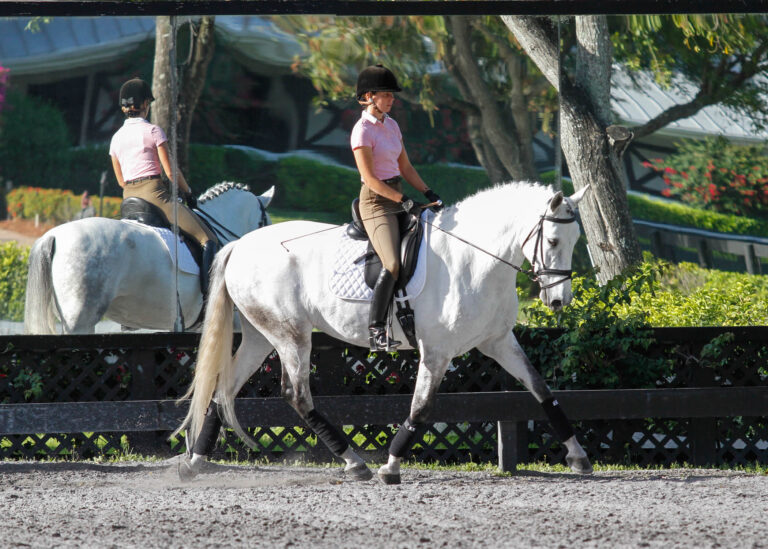In the summer of 2012, Beth Baumert visited Sarah and Morten Thomsen in Silkeborg, Denmark.
“Their fantastic brick facility sported natural light and an aviary, and their lovely horses acted like they were special enough to belong there,” she reported. “The first horse I saw was ridden well, but when I saw him do a canter pirouette, I thought, Wow! That horse can really canter pirouette. Then I saw the next horse and he also had a rare talent for canter pirouette.
Then, after the third pirouetting genius, I knew that it was Morten Thomsen who was the genius, so I had to ask him: “How do you do that?” Here’s what he told me:
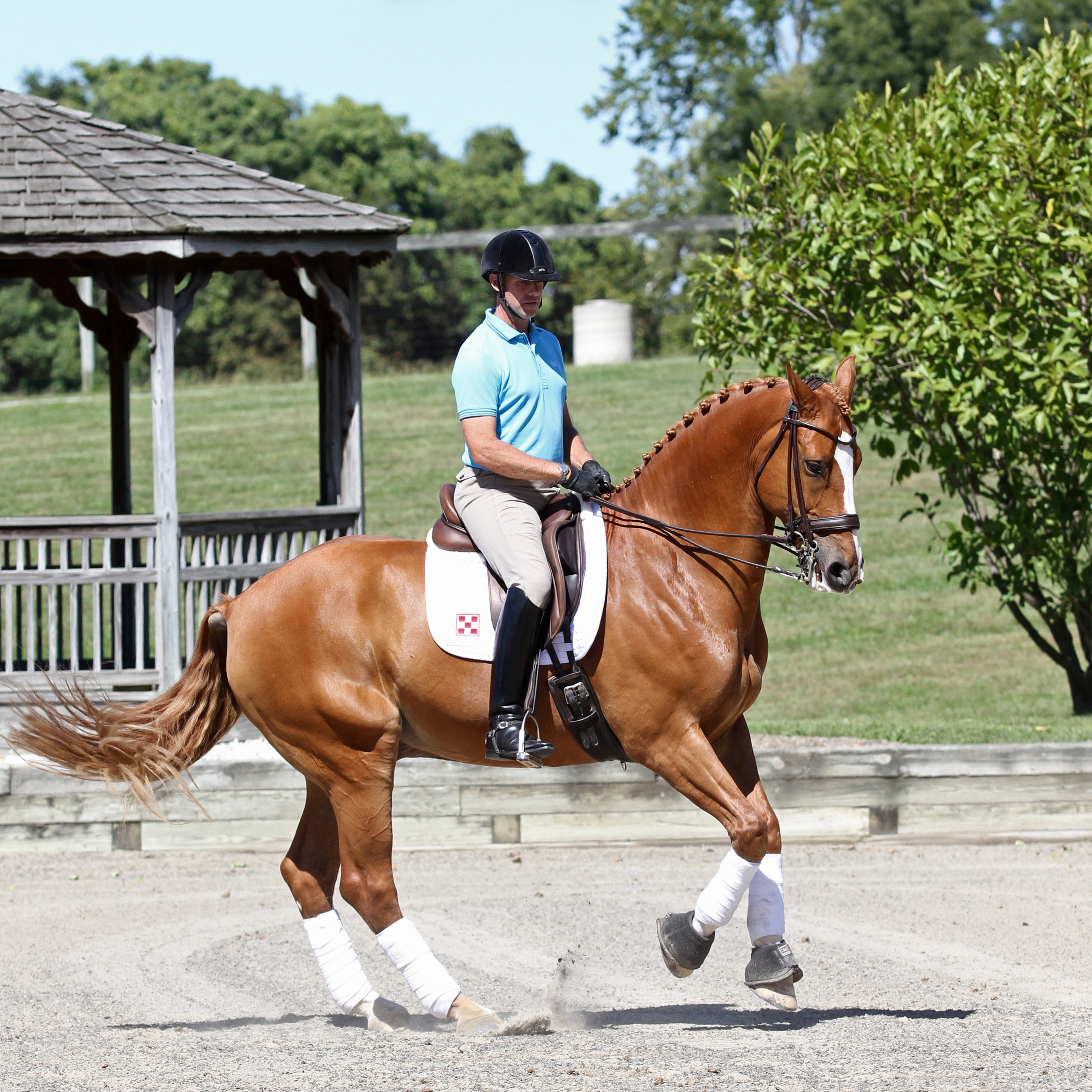
Trainers often introduce canter pirouettes by spiraling in from a large circle. It’s a common mistake, in my opinion, because horses started this way don’t really know what you want. Often the rider starts to kick and pull and the horse doesn’t understand. The horse gets a lot of pressure but he doesn’t see the purpose.
I begin thinking about training canter pirouettes when my horse can do a walk-canter transition with ease. At that point, I know he’s ready for a little collection in the canter because he is able to bend his hind legs, lower the quarters and sit. I first ask for collection on a large circle, and the moment that he sits a little, I walk. You can feel when the horse sits because his rhythm slows. This teaches the horse that if he sits, he will get the reward of walking. As a result, he will try to sit quickly in order to be rewarded.
Of course, the situation can happen that we go on a circle and I feel that I can’t get the horse’s hind legs to bend. Sometimes horses just thrust themselves forward with the hind legs. In this situation, it’s impossible for the horse to sit, so I start in walk. In any case, it’s easiest for the horse to learn and understand the fundamentals of pirouette in walk, and then the basics are the same for canter. When I can make a large pirouette in walk, my horse will close his frame and sit. It’s difficult to sit in canter, but in walk, the horse will achieve it from the work you’ve done. At this point, my horse already knows everything he needs to learn about canter pirouette. I teach my horse all these things before we start it in canter.

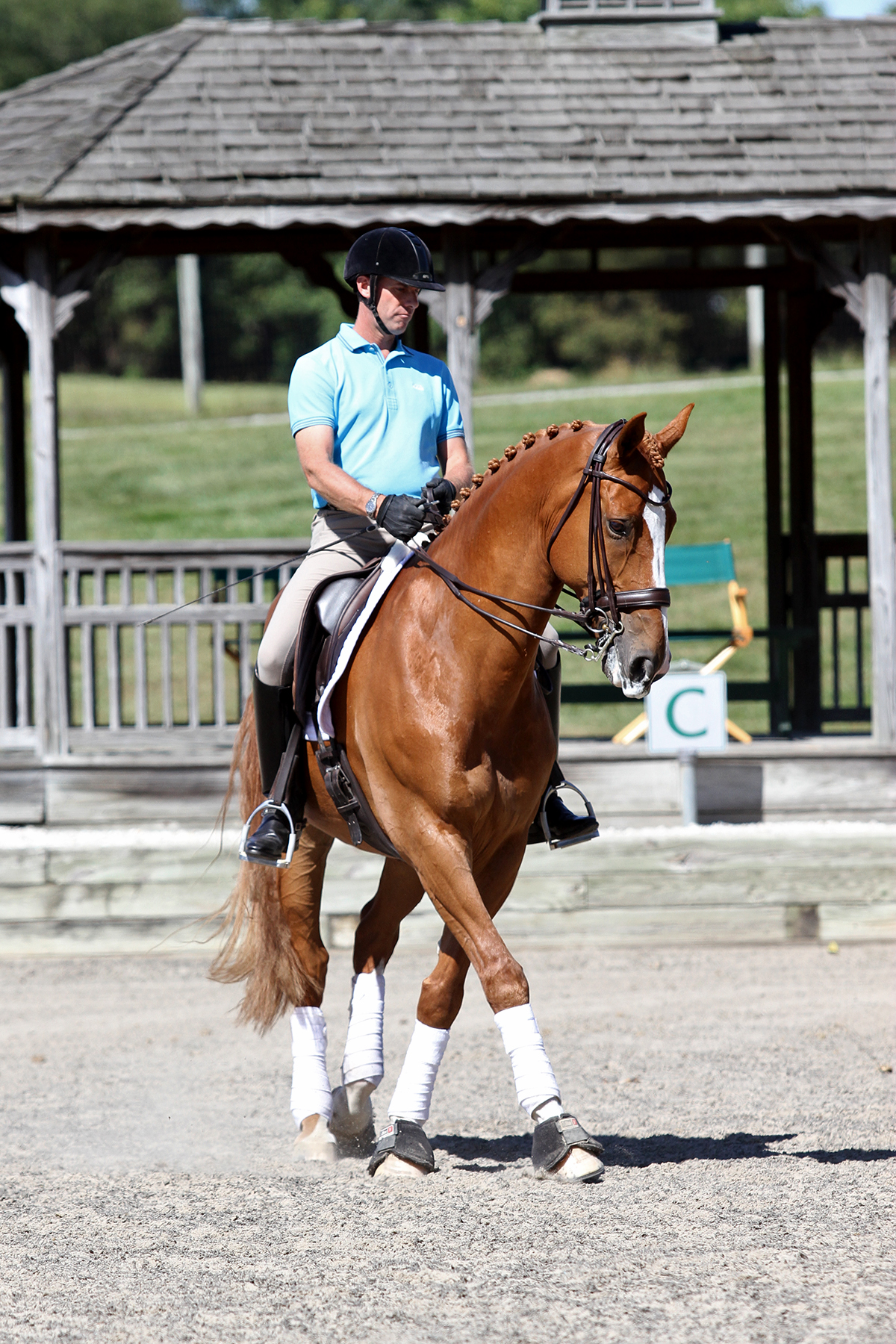

First Master the Walk Pirouette
I begin by teaching my horse to do travers, or haunches-in, on a circle. Then, I ask him to turn in the travers to make a pirouette in walk. Here’s how I begin: I control my horse’s shoulders with the position of my hands. If I want the shoulders to move left, I take both hands to the left. If I want them to go right I take both hands right. It’s similar to western neck reining. By making my horse’s shoulders mobile, my goal is to be able to center those shoulders exactly over the inside hind leg, and that inside hind must keep stepping forward rather than going to the side.
In pirouette left, for example, I want my horse to bend left and turn left. If I want to make the pirouette bigger, I move the shoulders out with my inside (left) rein. Then I turn from the outside (right) leg and rein, but mostly the rein. Remember, you don’t want your horse’s hindquarters to go in, so you won’t use too much leg for that reason. When I have this control over the shoulders, then I can bend left and control the turning.
So I ride a large walk pirouette like this:
1. Maintaining the left bend, I turn him left with the right hand using very little leg.
2. As soon as my horse turns in pirouette, I ask him to go out again from the inside leg and rein. I always want this control of the shoulders, so from the inside rein, I neck rein the shoulders out while keeping the left bend.
3. When I confirm that control with the inside rein, I turn again with the outside rein.
I confirm these aids to be sure he responds immediately: He goes out from inside rein and leg and in from mostly the outside rein. He turns left as soon as I bring my right hand left, and he moves out as soon as I take my left hand to the right.
As you review the pirouette in walk, do it bigger and smaller, quicker and slower. Those are all the corrections you will need to make later in canter. You’ll need to sometimes do it larger, sometimes smaller, sometimes quicker and sometimes slower. When you can make those adjustments in size and speed in the walk, then you will be able to do the same in canter. When my horse understands the concepts of turning with bend in the walk, he will understand it in canter, too.
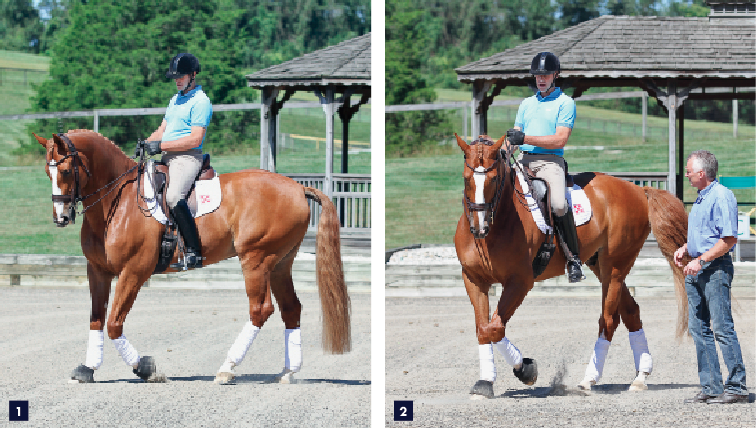
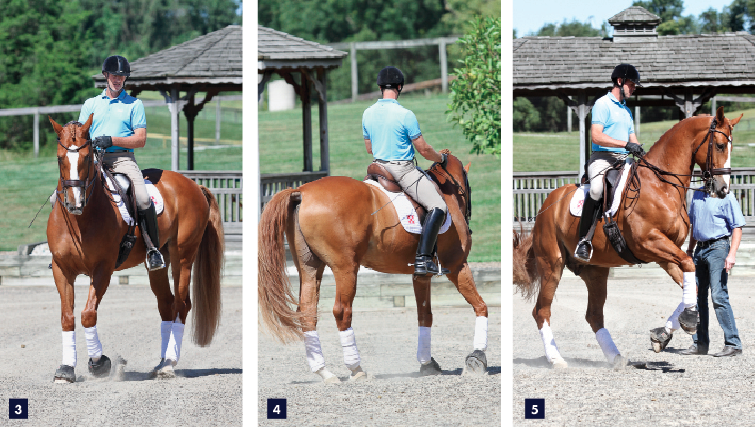
Now Train the Canter Pirouette
When the walk pirouette is well confirmed, I make it a bit quicker, and then even quicker. I tap him with the whip and ask for canter. I want just one jump of canter pirouette, and the moment my horse does it, I say, “Oh! Good!” and then I walk out of it and give him a break. Soon my horse knows that if I go into pirouette in walk and I start to make him quicker, he knows I will ask for canter. Then he knows he will get a break and I will praise him. As soon as he canters, I stop and praise him. I want only one jump of canter.
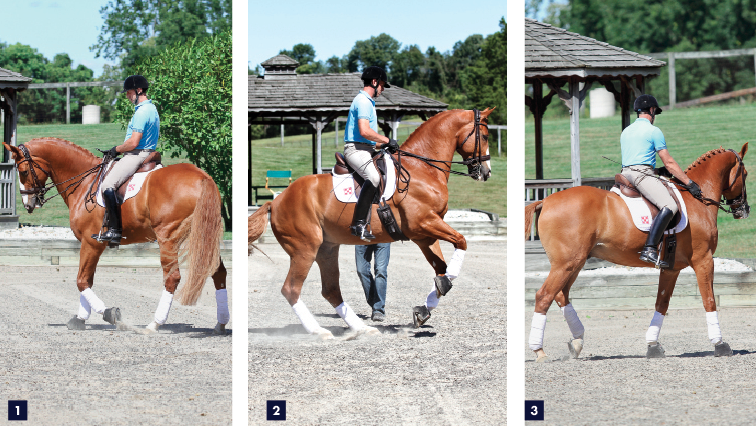
When the horse is confirmed in taking one balanced stride of canter pirouette, I take the next step. I say to my horse, “I didn’t see the first jump. Can you give me one more jump?” Slowly the horse learns to stay on the spot and take one, two and then three steps of canter pirouette. Just as you don’t start with 15 one-tempis, or 15 piaffe steps, it’s the same with the pirouette. I’m happy if I get one stride, then two, then three strides that are balanced. Remember what he has learned from the walk pirouettes that he can make a stride bigger, smaller, quicker or slower. When you have all those skills, you can do your pirouette from a normal collected canter because the horse understands exactly what you want.
Troubleshooting Common Mistakes
1. Spinning. Your horse, at some point, will start to spin, but you have taught your horse to go out from inside rein. If he starts to turn too fast in the pirouette left, stop and leg yield right keeping the left bend. If you teach your horse that you can stop him with the inside rein, then you can soon control the pirouette with that inside rein, and you can do as many strides as you want?two, four, six or eight strides.
2. Hind legs together. When your horse tries to collect too much in the pirouette, he jumps with his hind legs together, without separating them.
He needs to learn to jump forward with the inside hind leg. Ride travers on the large circle or half pass. Push your horse over until you feel that he separates his hind legs in the canter. Then walk. Try to make it slots smaller again. If he collects too much again, make the circle larger again and travers. Then as soon as the hind legs separate, walk. Make it clear to the horse what you want. Don’t continue until he makes a mistake. If you stop when the horse makes a mistake, then you are actually rewarding him for making the mistake even though you don’t mean to. The horse doesn’t see it that way. He sees that stopping work is a reward.
3. Uneven balance. If your horse is very good to one side but he loses the canter rhythm to the other side, it’s always because he has one hind leg that supports his weight more easily than the other hind leg. You can help the horse find the balance in pirouette on the weaker hind leg. In travers, you put the pressure on the outside hind leg, and in shoulder-in you put the pressure on the inside hind leg. If your horse’s canter is good to the left but the right is not good, then when you go right, you should start it from shoulder-in instead of travers. I get the hind leg a little bit out so there’s more pressure on the right hind leg when I do the pirouette right. Then you can do pirouette left from travers so the right hind leg again takes the pressure. In this way, you do pirouette with the pressure on whichever hind leg you want. Sometimes it only takes a few weeks before the horse is comfortable taking the weight on either hind leg, and you can do the pirouette equally to both sides. You can do the pirouette so there is more pressure on one leg or the other or the same on both. You can level it out in a way that makes it easier for the horse to turn.
4. Stuck. In the test, sooner or later, it happens that there is a mistake that makes the horse stop. This can happen in pirouette or in piaffe. I always teach my horses that they are able to start again. I don’t want the horse to think, Now I’m stuck and I can’t start again. When that happens, the rider usually ends up using too much leg. Teach your horse that he can start easily from just a cluck. Stop him sometimes and then just start again. When you can do this, you can relax and the pirouettes get even better. It’s the same in piaffe.
Psychology of Equine Learning
Remember that any time you want to teach your horse a new concept, he will try a lot of responses, and many of them will be wrong. But if you punish him or tell him he’s wrong every time he gives you the wrong response, he will stop trying?that’s trouble. The right answer will never come and I can never reward. You need your horse to try. The more he tries, the sooner he will get the right answer and then you can reward him.
Think of this while you teach the pirouettes or any new concept. As long as my horse doesn’t know the right thing for sure, he can make as many mistakes as he wants. If he definitely knows exactly what you’re asking for, and you’re sure the mistake is not on you, then you can correct your horse, but you have to be sure that the mistake is not yours and the horse is not misunderstanding you. A lot of mistakes happen because the horse is misunderstanding the rider, and it’s our responsibility to be clear.
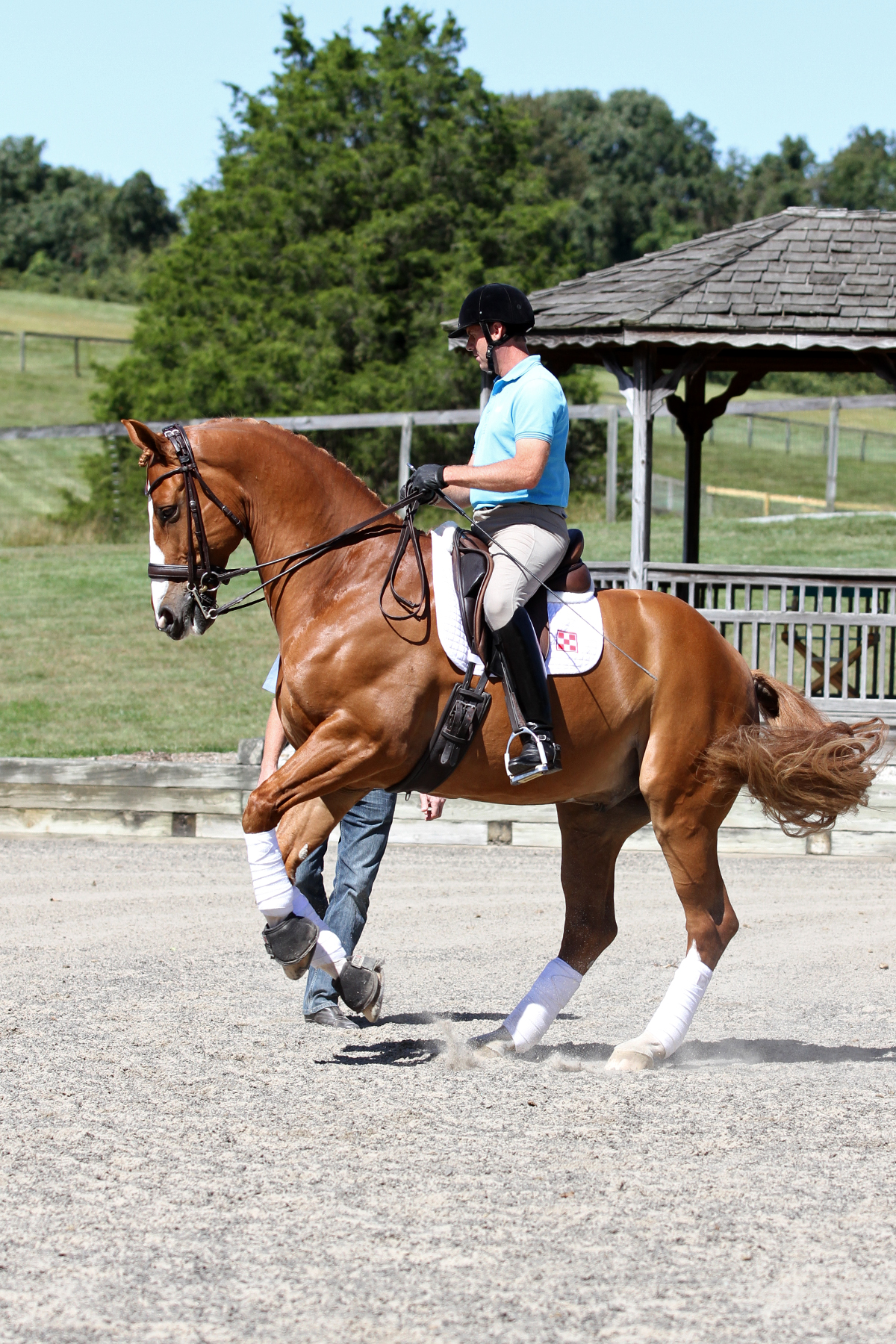
Morten Thomsen was educated as a Bereiter (a licensed instructor/trainer) in 1979 and then worked for various stables in Denmark and Germany. In 1984, he started his own dressage stable. He has ridden in Olympics, World Games and European and Danish Championships. In 2007, he and his wife, Sarah Arv? Thomsen, built new facilities where they train and sell horses. A large part of Morten’s time is spent traveling to give clinics and train some of the world’s best riders, including Hickey, Catherine Haddad, Sue Blinks and Ingrid Klimke of Germany. Visit dressagearve.dk.
Chris Hickey is head trainer at Hilltop Farm and has shown FEI-level horses successfully for many years in the United States and Germany.





